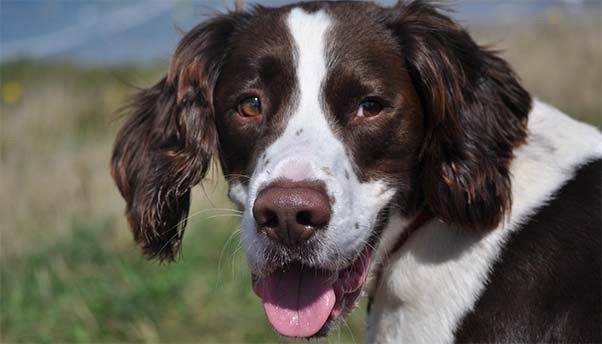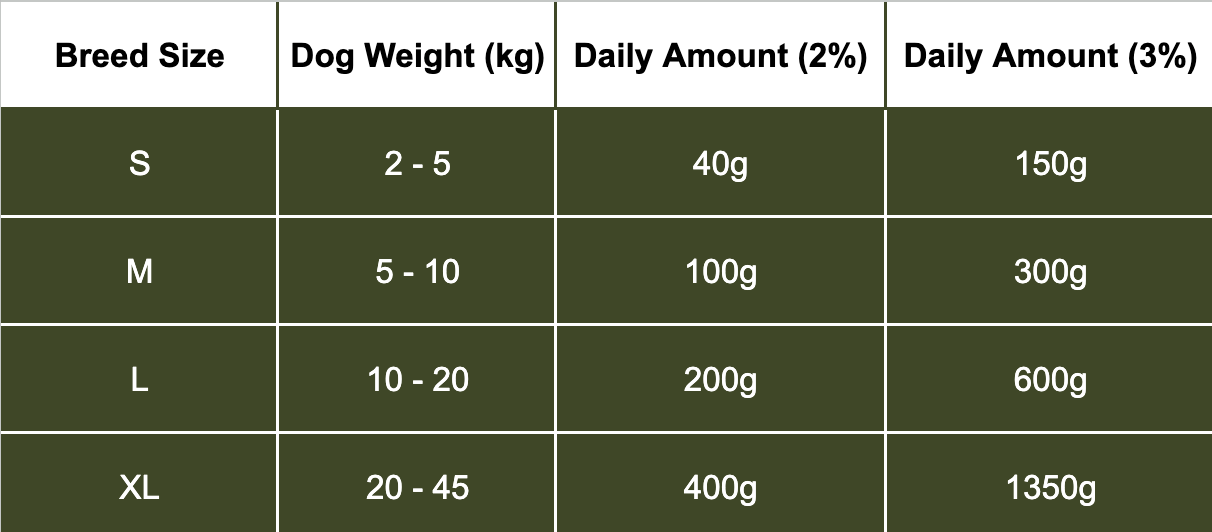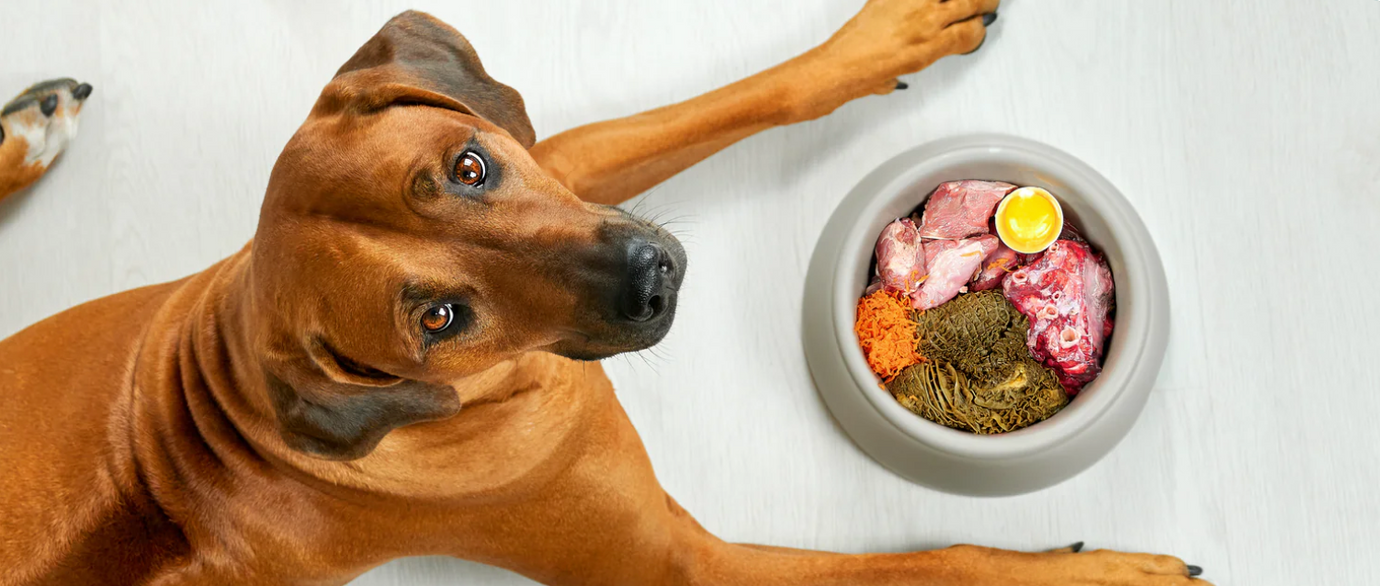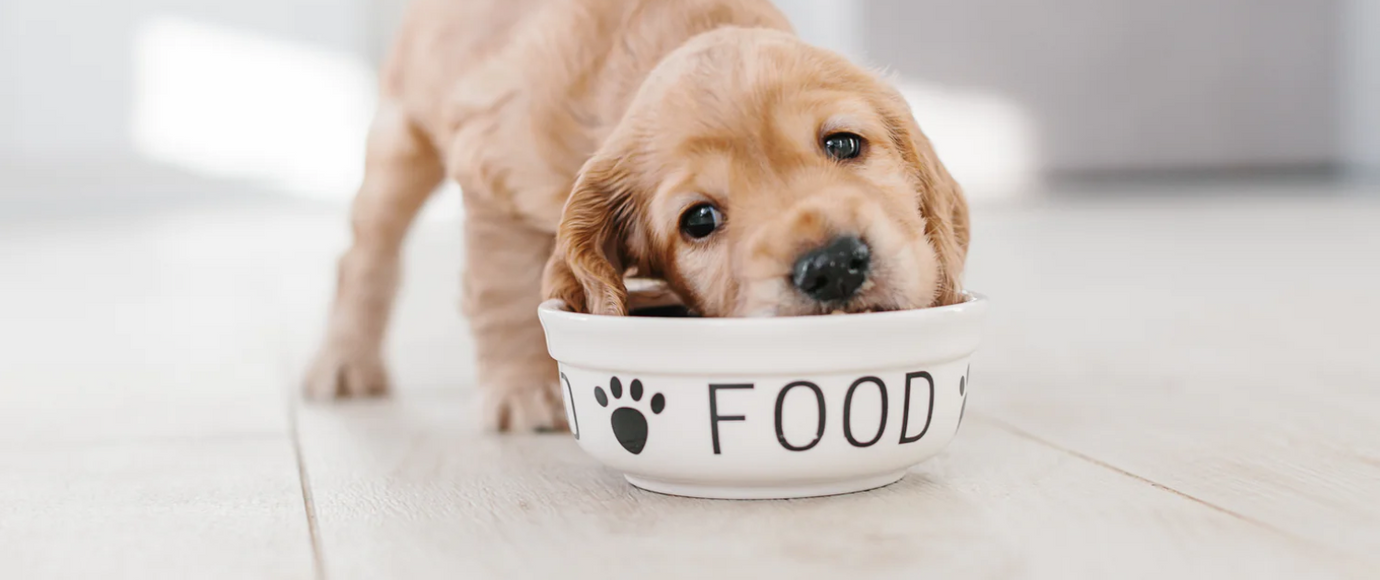Different meats provide different nutrients. For optimal nutrition, balance is created by feeding a variety of proteins. A balanced and nutritionally correct raw diet should consist of 80% meat, 10% bone and 10% organ meats - 5% being liver. By feeding these ratios you can be sure your dog is getting the nutrients they need.

Making the Switch to Raw Dog Food
There are several ways to make the transition and these are going to depend on your dog's age, state of health, how long on current diet, and what that diet consists of.
The simplest way is to feed their current food in the morning, miss their evening meal, and then start with our raw mince the following morning; leaving 24 hours between meals allows the tummy time to settle.
You can start with one protein source to help your dog's digestive system adjust to their new diet; chicken is usually the best as most dogs can tolerate it, even the sensitive souls.
Variety is needed to cover all nutritional needs; slowly introduce different protein sources over a couple of weeks for balance.
At all times, monitor their stools, and if any digestive upsets manifest, take the transition a step back. There is no one-size-fits-all way to switching to raw; ingenuity may be required for some dogs, a patient, slow approach for others.

Elements of a Raw Diet
Alongside our minced foods you will need to consider the following.
Raw meaty bones are a complex source of biologically balanced minerals and ideal for your dog’s mental and dental health. Periodontal disease can be greatly reduced through the feeding of raw meaty bones.
Eggs are a super food for dogs and can easily be added, shell and all, to your dog's Farmer's Dog minces.
Oily Fish provide bioavailable omega-3 fats. These are useful as anti-inflammatory nutrients as well as supporting joint, heart, kidney and eye health. You can feed them as frozen sprats or tinned sardines in spring water. Avoid tins with brine or sauces included.
Vegetables are not a required food source, but a careful selection can provide valuable nutrients, and add fibre and variety to a dog’s diet. Fed whole they will generally pass through undigested. Depending on the type of vegetable, preparing them by pureeing, steaming or baking will make them easy to digest and therefore make full use of the nutrients.
Fruits and Berries such as blueberries, raspberries and strawberries can also be of some benefit.
Supplements are not essential unless your dog has specific health problems or medical conditions.
Processed dog food complies to certain guidelines to use the term Complete; the guidelines are sadly not complete themselves, and do not ask the food to contain everything a dog needs to use the term.
Processed dog food also contains Phytic acid and heated fats which can block the absorption of needed nutrients found in the fresh food, and so adding dry dog food kibble hinders your dog's nutrient requirements being met.

Feeding Guide
The nutritional requirements of individual dogs vary according to breed, size, age, and activity level.
For adult dogs, a good place to start is 2-3% of their ideal bodyweight. The table here is only a guide and adjustments should be made according to your individual dog’s requirements.
Puppies have different nutritional requirements and need feeding according to their development stages. Starting at 10% to 8% of their bodyweight until four months old, gradually decreasing to 3% at nine months of age. Puppies also need a balanced 80:10:10 diet on a daily basis as opposed to adults who can achieve balance over time.
See our feeding blogs for a quick guide on the amount of chub or chubs your dog needs daily; the guides are based on the 400gm chubs.
How much should I feed?
Feeding Puppies
Will the Raw Dog Food fit in my freezer?
Our standard 400gm chubs measure 25cm in length, the 2kg Chicken or Beef Chubs average 46cm in length.
The chubs circle diameter (width) is 5cm for the 400gm chubs & 8cm for the 2kg Chicken or Beef chubs.
Please see our feeding blogs for a quick guide on the amount of chubs your dog needs daily; the guides are based on the 400gm chubs.











